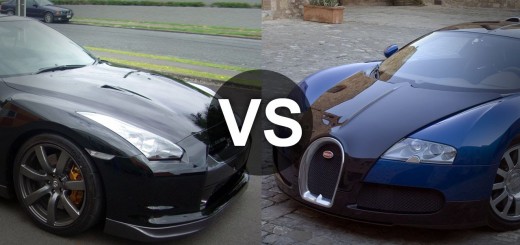The first Land Rover was designed in 1947 in the United Kingdom (on the island of Anglesey in Wales) by Maurice Wilks, chief designer at the British car company Rover on his farm in Newborough, Anglesey. It is said that he was inspired by an American World War II Jeep that he used one summer at his holiday home in Wales. The first Land Rover prototype ‘centre steer’ was built on a Jeep chassis. A distinctive feature is their bodies, constructed of a lightweight rustproof proprietary alloy of aluminium and magnesium called Birmabright. This material was used owing to post war steel shortages and a plentiful supply of post-war aircraft aluminium. This metal’s resistance to corrosion was one of the factors that allowed the vehicle to build up a reputation for longevity in the toughest conditions. The early choice of colour was dictated by military surplus supplies of aircraft cockpit paint, so early vehicles only came in various shades of light green; all models until recently feature sturdy box section ladder-frame chassis.
Maurice Wilks, the man behind the design for the Series I Land Rover
The early vehicles, such as the Series I, were field-tested at Long Bennington and designed to be field-serviced; advertisements for Rovers cite vehicles driven thousands of miles on banana oil. Now with more complex service requirements this is less of an option. The British Army maintains the use of the mechanically simple 2.5 litre 4 cylinder 300TDi engined versions rather than the electronically controlled 2.5 litre 5 cylinder TD5 to retain some servicing simplicity. This engine also continued in use in some export markets using units built at a Ford plant in Brazil, where Land Rovers were built under license and the engine was also used in Ford pick-up trucks built locally. Production of the TDi engine ended here in 2006, meaning that Land Rover no longer offers it as an option. International Motors of Brazil offer an engine called the 2.8 TGV Power Torque, which is essentially a 2.8-litre version of the 300TDi, with a corresponding increase in power and torque.
Since its purchase by Ford, Land Rover has been closely associated with Jaguar. In many countries they share a common sales and distribution network (including shared dealerships), and some models now share components and production facilities.
SERIES I
Series I, 80″ 1948-1953
May 1950, headlamps protrude through grille. Mid 1951, inverted “T” grille (as Series II’s). Side lights move from bulkhead to wings. Pre mid 1951 models for U.S. market had bulkhead lights relocated to wings to comply with lighting regulations. 1949-1951 Tickford Coachbuilders produced 650 Station Wagons.
Series I, 86″ 1953-1957. Station Wagon
A redesigned vehicle with increased load space. Wheel base lengthened to 88″ 1957-1958 to accommodate new engine.
Series I, 107″ 1953-1957, Pick-up with 3/4 canvas
Same design as basic 80″ with much larger load space. Wheel base lengthened to 109″ 1957-1958 to accommodate new engine.
Series I, 107″ 1956-1958, Station Wagon
Redesigned rear body with doors and seating for additional Passengers.
SERIES II
Series II, 88″ 1958-1961, Hard Top
New body style, includes sill panels to conceal chassis, fuel tank exhaust pipe. Available as pick-up, soft top and station wagon.
Series IIA, 109″, 1961-1971, Pick-up with 3/4 canvas
The “regular” or “two door” 109″ was available in North America in Series II and IIA from 1958 to 1966. Petrol or diesel engine.

Series IIA, 109″, 1961-1971 Station Wagon
Originally a 10 seater it was “re-launched” as a 12 seater to “get around” British tax laws. 2.6 litre 6 cylinder petrol engine was introduced in 1967. The 109″ SW was available in North America in Series II and IIA form from 1958-1967.
Series IIA, 88″ 1961-1971, Military Soft Top
Designated “1/4 ton” in British military service. Available as a “general service” vehicle with 12v electrics or a “fitted for radio” vehicle with 24v electrics.
Series IIA, 109″, 1961-1971 Military Ambulance
Custom built rear body built by Marshals of Cambridge. In addition to regular military specs. These vehicles had front and rear sway bars.
Series IIA, 109″ “Dormobile” Conversion
Molded fiberglass, side hinged roof section, opens for added head room and loft sleeping space. Interior fitted
with special seats, sink, cabinets and stove. Some vehicles had side lights mounted atop wings so that fuel and water cans could be carried atop the front bumper.
Series IIA, 109″, “Carawagon” Conversion
Competitor to the Dormobile, this camper conversion uses wood to extend the standard roof, usually fitted to a regular 109″‘.
Forward Control Ser. IIA, IIB 1961-1970
Utilized many of the same mechanical components, like engines, as normal Land Rovers. Massive 5’4″ x 10’5″ load bed was rated for a 3,380 lb. load. Ideal for special purpose platforms, many were fitted with hinged drop sides and tailgate. Removable corner posts allowed it to convert to a flatbed in minutes.
Series IIA 88″ 1969 “Bugeye”
Lighting regulation in Australia required moving the headlamps from the radiator panel to the wings. Land Rover had not yet designed a proper panel to accept the lights. So they sat on the surface. This interim model, between the so-called “early” IIA and “late” IIA is commonly referred to as the “Bugeye”.
Late Series IIA, 88″, Fall 1969-1971, Soft Top
New front wing panels with recessed headlamp. Available as hard top, station wagon and pick-up model. 21/4 litre petrol or diesel engine. Sill panels narrowed from 5″ to 3″.
SERIES III
Series III, 88″, Fall 1971-1985 Pick-up with 3/4 canvas
Plastic radiator grille replaces wire mesh type. Revised instrumentation – moved from central position to in front of driver with plastic dash. Available in U.S.A. as hard top seven seater through 1974.
Series III, 109″, Fall 1971-1985 Station Wagon
Produced in 10 and 12 passenger configuration. 21/4 petrol, 21/4 diesel and 2.6 petrol engines. V8 available in 1980. Tropical roof with air vents.
Series III, 109″, 1971-1985 3/4 Ton Regular
Military Soft Top Reinforced body and chassis with two inch suspension extension. Standard equipment included oil c o o l e r, twin fuel tanks, military waterproof lighting system, front and rear bumperettes with lifting rings. Available in 12v GS (general service) and 24v FFR (fitted for radio).
Series III 88″ 1971-1985 Military Lightweight
Series IIA version 1968-1971. The early IIA Lightweights had their F. V. headlamps mounted on the radiator panel. Late IIA and III models had theirs on the wings. Designated “1/2 ton”, it was designed to be air lifted by helicopter. The standard 1/4 ton was too heavy, the Lightweight heavier still, but it could be rapidly stripped of necessary panels to bring it within the helicopter’s lifting capabilities.
Military 101″ Forward Control 1974-1978
Designated “1 Ton” by British Military. Powered by a 3.5 litre V8, minimal front and rear overhang made it Solihull’s most capable performer off road. Designed as a gun-tractor for the new British 105mm light gun which weighed 750 lbs more than the 105mm Pack Howitzer towed by the “3/4 ton” 109″. Also available in hard top and Ambulance versions.
Series III, 109″, High Capacity Pick-Up (H.C.P. U . )
1981-1983. Redesigned rear body for carrying loads of greater volume wider and longer load areas is separated from cab. Incorporates a full width tailgate. Replaced in late ’83 by the 110″ H.C.P.U.
Series III, 109″, Stage One V8, Station Wagon 1979-1985
So named as they were “Stage 1″ of a major investment scheme in 1978. 3.5 litre V8, using Range Rover gearbox and permanent 4WD. Radiator grille moved forward and new bonnet fitted to accommodate larger drive train. Available all 109″ body styles.

![Maurice_wilks[1]](http://www.rathagaya.com/wp-content/uploads/2015/02/Maurice_wilks1-300x242.jpg)




















![maxresdefault[1]](http://www.rathagaya.com/wp-content/uploads/2016/02/maxresdefault1-520x245.jpg)

![0B7A9456-e1455573180406[1]](http://www.rathagaya.com/wp-content/uploads/2016/03/0B7A9456-e14555731804061-520x245.jpg)